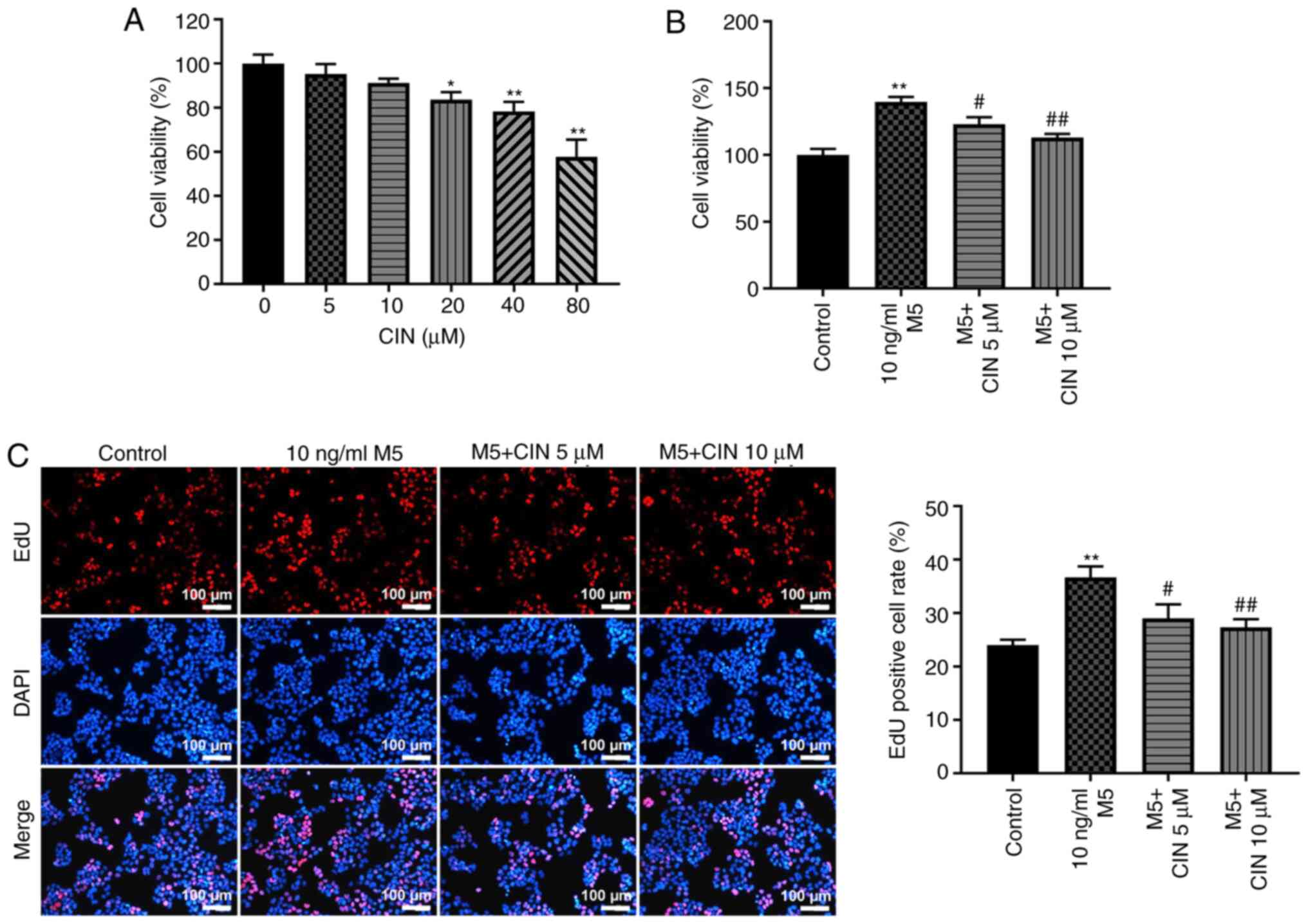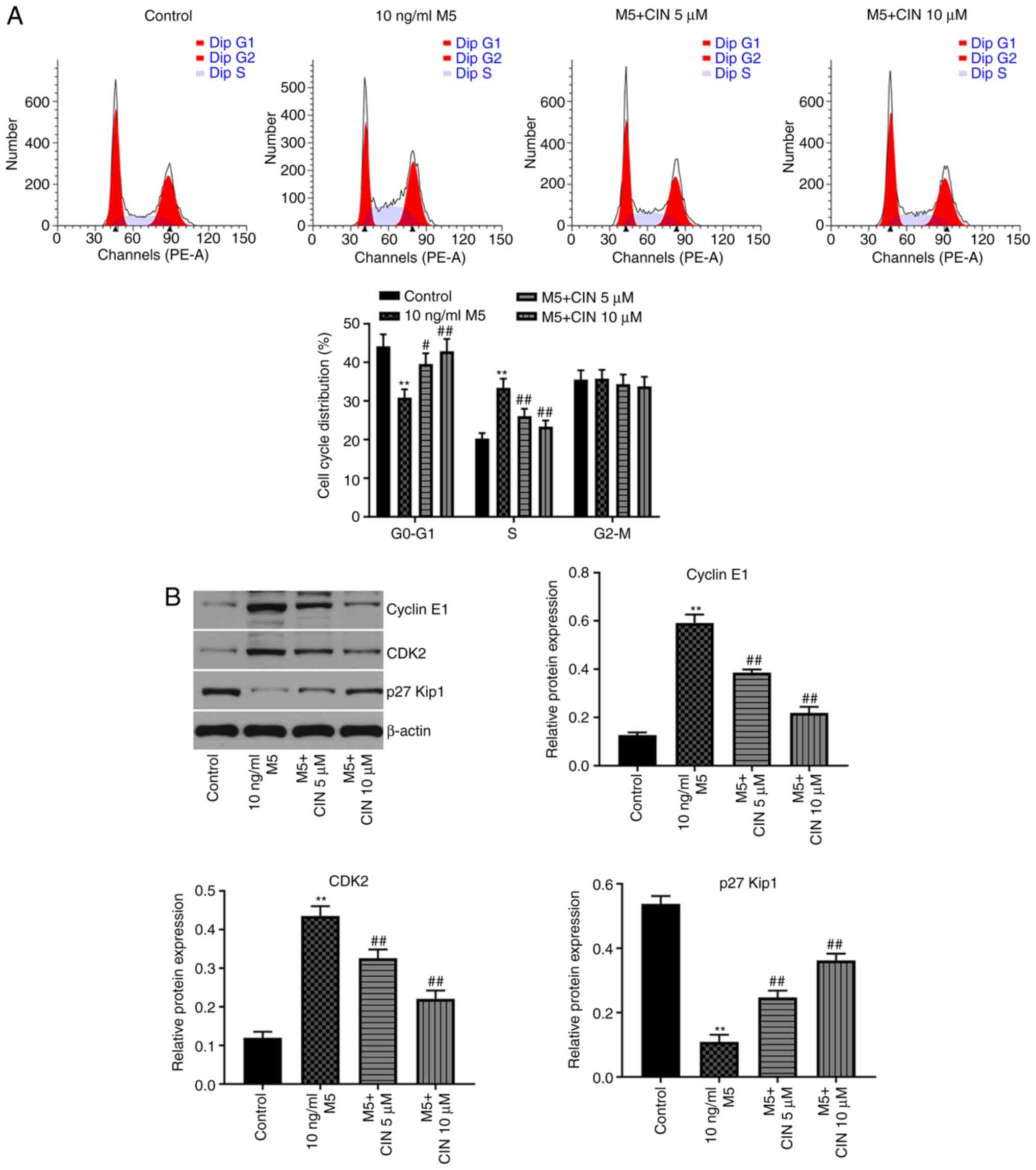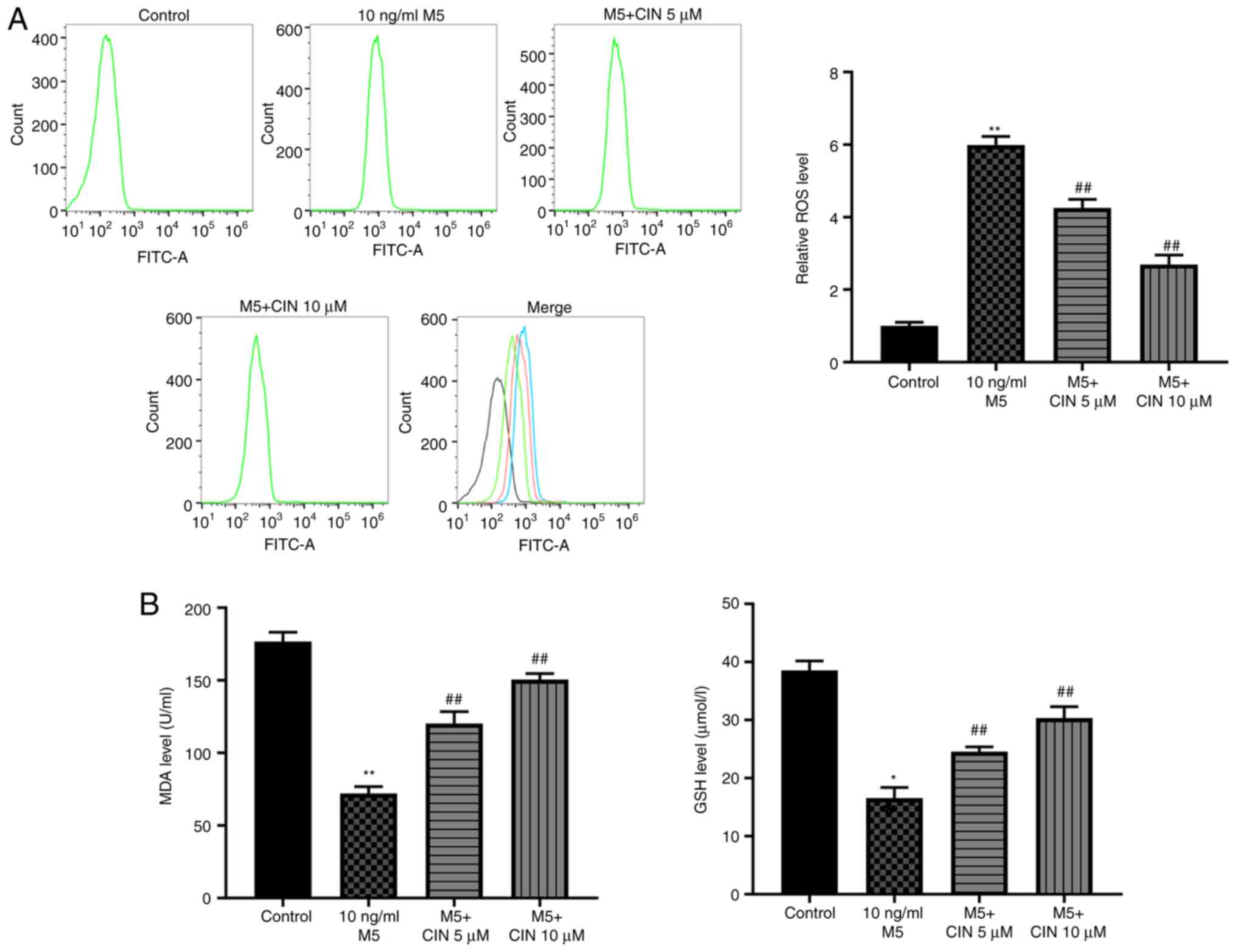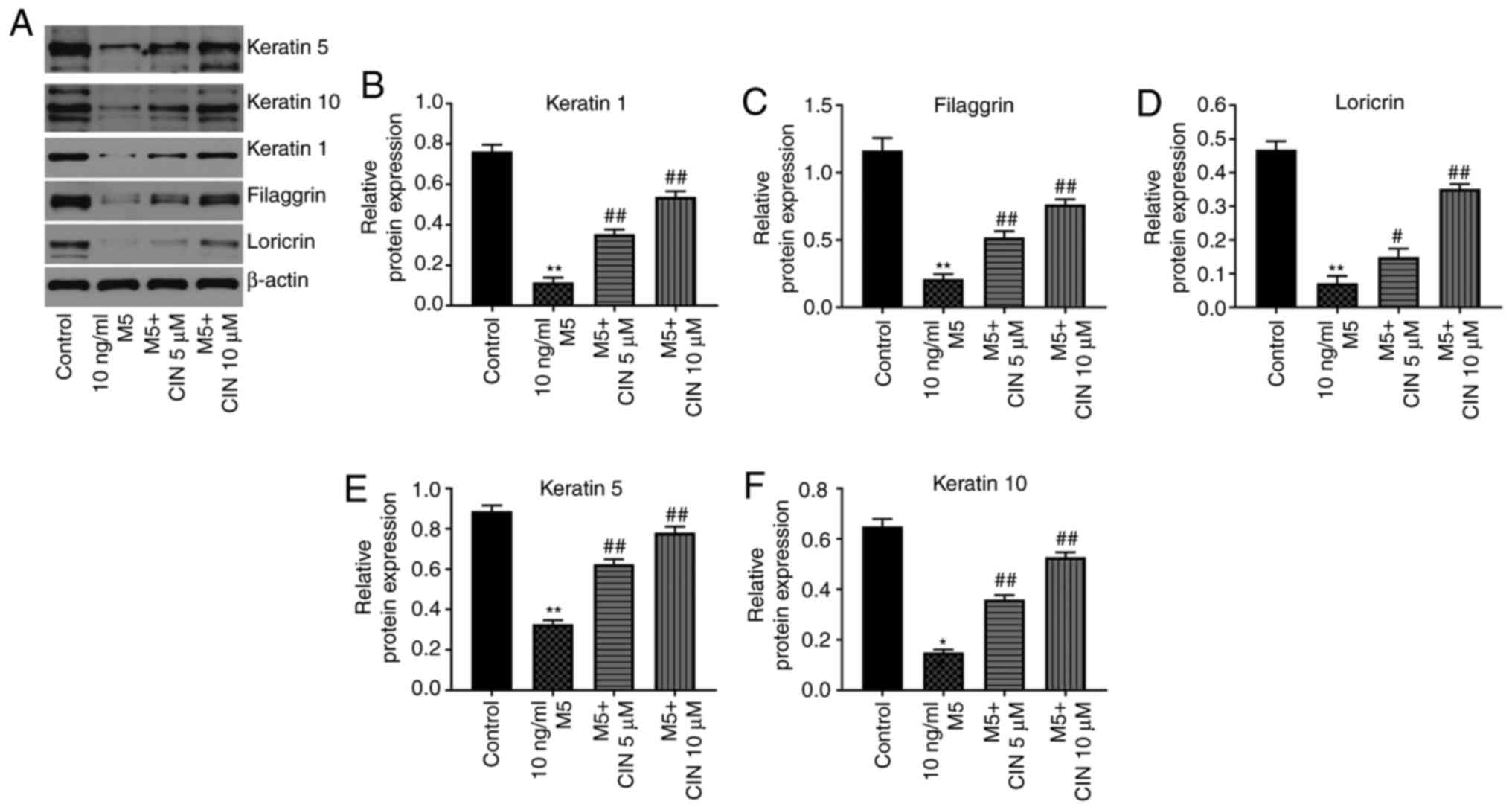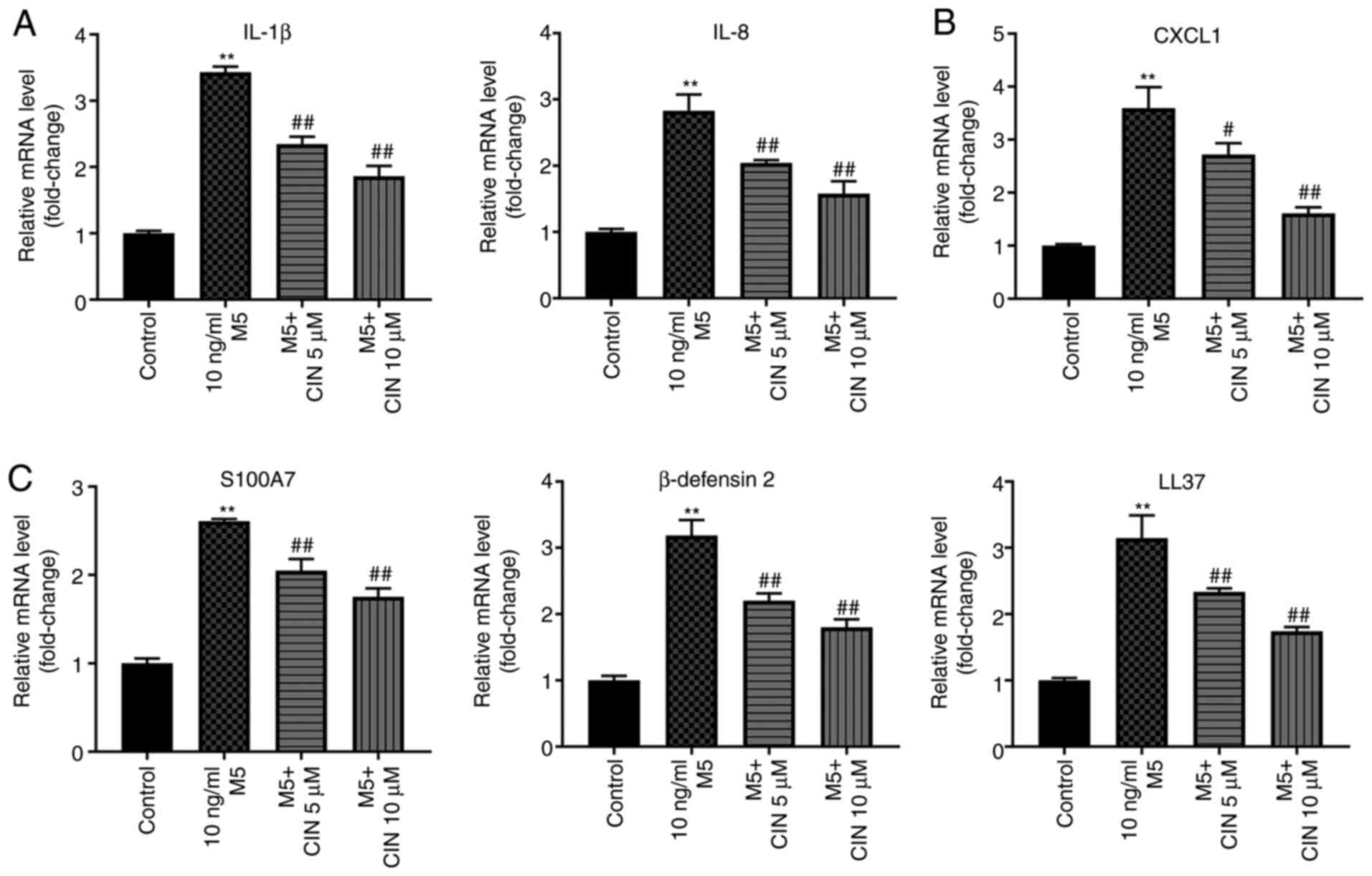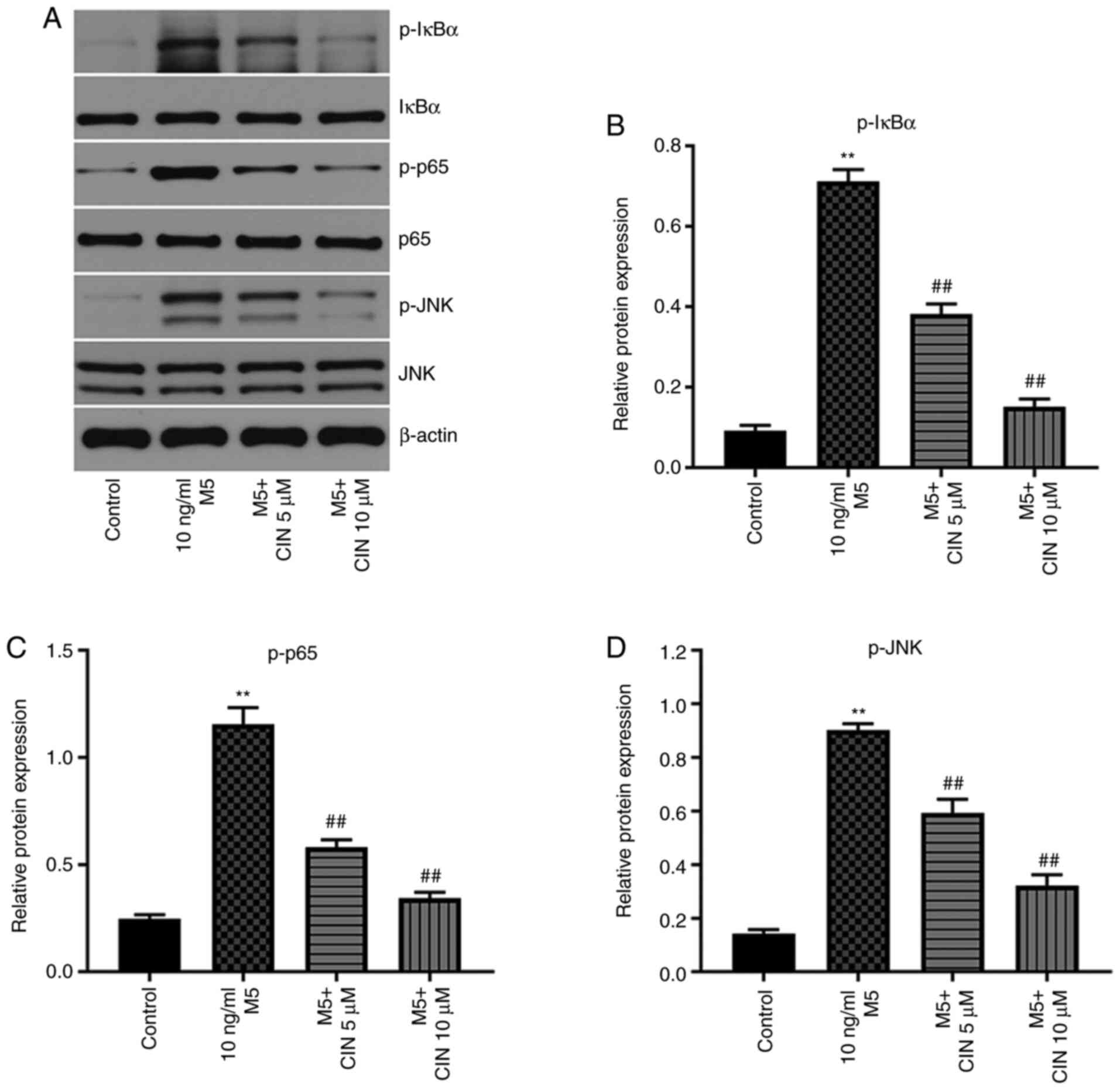|
1
|
Schleicher SM: Psoriasis: Pathogenesis,
assessment, and therapeutic update. Clin Podiatr Med Surg.
33:355–366. 2016. View Article : Google Scholar : PubMed/NCBI
|
|
2
|
Nakajima K and Sano S: Mouse models of
psoriasis and their relevance. J Dermatol. 45:252–263. 2018.
View Article : Google Scholar : PubMed/NCBI
|
|
3
|
Lee J, Song K, Hiebert P, Werner S, Kim TG
and Kim YS: Tussilagonone ameliorates psoriatic features in
keratinocytes and imiquimod-induced psoriasis-like lesions in mice
via NRF2 activation. J Invest Dermatol. 140:1223–1232.e4. 2020.
View Article : Google Scholar : PubMed/NCBI
|
|
4
|
Girolomoni G, Strohal R, Puig L, Bachelez
H, Barker J, Boehncke WH and Prinz JC: The role of IL-23 and the
IL-23/T(H) 17 immune axis in the pathogenesis and treatment of
psoriasis. J Eur Acad Dermatol Venereol. 31:1616–1626. 2017.
View Article : Google Scholar : PubMed/NCBI
|
|
5
|
Madden SK, Flanagan KL and Jones G: How
lifestyle factors and their associated pathogenetic mechanisms
impact psoriasis. Clin Nutr. 39:1026–1040. 2020. View Article : Google Scholar : PubMed/NCBI
|
|
6
|
Rabeony H, Petit-Paris I, Garnier J,
Barrault C, Pedretti N, Guilloteau K, Jegou JF, Guillet G, Huguier
V, Lecron JC, et al: Inhibition of keratinocyte differentiation by
the synergistic effect of IL-17A, IL-22, IL-1α, TNFα and oncostatin
M. PLoS One. 9:e1019372014. View Article : Google Scholar : PubMed/NCBI
|
|
7
|
Niyonsaba F, Ushio H, Nakano N, Ng W,
Sayama K, Hashimoto K, Nagaoka I, Okumura K and Ogawa H:
Antimicrobial peptides human beta-defensins stimulate epidermal
keratinocyte migration, proliferation and production of
proinflammatory cytokines and chemokines. J Invest Dermatol.
127:594–604. 2007. View Article : Google Scholar : PubMed/NCBI
|
|
8
|
Zhang D, Wang Y, Xia Y, Huo J, Zhang Y,
Yang P, Zhang Y and Wang X: Repression of miR-142-3p alleviates
psoriasis-like inflammation by repressing proliferation and
promoting apoptosis of keratinocytes via targeting Sema3A. Mol Cell
Probes. 52:1015732020. View Article : Google Scholar : PubMed/NCBI
|
|
9
|
Nguyen LTH, Ahn SH, Nguyen UT and Yang IJ:
Dang-Gui-Liu-Huang Tang a traditional herbal formula, ameliorates
imiquimod-induced psoriasis-like skin inflammation in mice by
inhibiting IL-22 production. Phytomedicine. 47:48–57. 2018.
View Article : Google Scholar : PubMed/NCBI
|
|
10
|
Hoesel B and Schmid JA: The complexity of
NF-κB signaling in inflammation and cancer. Mol Cancer. 12:862013.
View Article : Google Scholar : PubMed/NCBI
|
|
11
|
Matulewicz N and Karczewska-Kupczewska M:
Insulin resistance and chronic inflammation. Postepy Hig Med Dosw
(Online). 70:1245–1258. 2016.PubMed/NCBI
|
|
12
|
Xu F, Xu J, Xiong X and Deng Y:
Salidroside inhibits MAPK, NF-κB, and STAT3 pathways in
psoriasis-associated oxidative stress via SIRT1 activation. Redox
Rep. 24:70–74. 2019. View Article : Google Scholar : PubMed/NCBI
|
|
13
|
Sun L, Liu LN, Li JC, Lv YZ, Zong SB, Zhou
J, Wang ZZ, Kou JP and Xiao W: The essential oil from the twigs of
Cinnamomum cassia Presl inhibits oxytocin-induced uterine
contraction in vitro and in vivo. J Ethnopharmacol. 206:107–114.
2017. View Article : Google Scholar : PubMed/NCBI
|
|
14
|
Klibanov AM and Giannousis PP: Geometric
specificity of alcohol dehydrogenases and its potential for
separation of trans and cis isomers of unsaturated aldehydes. Proc
Natl Acad Sci USA. 79:3462–3465. 1982. View Article : Google Scholar : PubMed/NCBI
|
|
15
|
Kim ME, Na JY and Lee JS:
Anti-inflammatory effects of trans-cinnamaldehyde on
lipopolysaccharide-stimulated macrophage activation via MAPKs
pathway regulation. Immunopharmacol Immunotoxicol. 40:219–224.
2018. View Article : Google Scholar : PubMed/NCBI
|
|
16
|
Yan L, Song F, Li H, Li Y, Li J, He QY,
Zhang D, Wang F, Zhang M, Zhao H, et al: Submicron emulsion of
cinnamaldehyde ameliorates bleomycin-induced idiopathic pulmonary
fibrosis via inhibition of inflammation, oxidative stress and
epithelial-mesenchymal transition. Biomed Pharmacother.
102:765–771. 2018. View Article : Google Scholar : PubMed/NCBI
|
|
17
|
Ye F, Zhang J, Zhang Q, Zhang J and Chen
C: Preliminary study on the mechanism of long noncoding RNA SENCR
regulating the proliferation and migration of vascular smooth
muscle cells. J Cell Physiol. 235:9635–9643. 2020. View Article : Google Scholar : PubMed/NCBI
|
|
18
|
Zhu J, Liu B, Wang Z, Wang D, Ni H, Zhang
L and Wang Y: Exosomes from nicotine-stimulated macrophages
accelerate atherosclerosis through miR-21-3p/PTEN-mediated VSMC
migration and proliferation. Theranostics. 9:6901–6919. 2019.
View Article : Google Scholar : PubMed/NCBI
|
|
19
|
Farahzadi R, Fathi E and Vietor I:
Mesenchymal stem cells could be considered as a candidate for
further studies in cell-based therapy of alzheimer's disease via
targeting the signaling pathways. ACS Chem Neurosci. 11:1424–1435.
2020. View Article : Google Scholar : PubMed/NCBI
|
|
20
|
Fathi E and Vietor I: Mesenchymal stem
cells promote caspase expression in Molt-4 leukemia cells via
GSK-3α/Β and ERK1/2 signaling pathways as a therapeutic strategy.
Curr Gene Ther. 21:81–88. 2021. View Article : Google Scholar : PubMed/NCBI
|
|
21
|
Fathi E, Farahzadi R, Javanmardi S and
Vietor I: L-carnitine extends the telomere length of the cardiac
differentiated CD117+−expressing stem cells. Tissue
Cell. 67:1014292020. View Article : Google Scholar : PubMed/NCBI
|
|
22
|
Wang J, Li XM, Bai Z, Chi BX, Wei Y and
Chen X: Curcumol induces cell cycle arrest in colon cancer cells
via reactive oxygen species and Akt/GSK3β/cyclin D1 pathway. J
Ethnopharmacol. 210:1–9. 2018. View Article : Google Scholar : PubMed/NCBI
|
|
23
|
Fathi E, Valipour B, Sanaat Z, Nozad
Charoudeh H and Farahzadi R: Interleukin-6, −8, and TGF-β secreted
from mesenchymal stem cells show functional role in reduction of
telomerase activity of leukemia cell Via Wnt5a/β-catenin and p53
pathways. Adv Pharm Bull. 10:307–314. 2020. View Article : Google Scholar : PubMed/NCBI
|
|
24
|
Livak KJ and Schmittgen TD: Analysis of
relative gene expression data using real-time quantitative PCR and
the 2(-Delta Delta C(T)) method. Methods. 25:402–408. 2001.
View Article : Google Scholar : PubMed/NCBI
|
|
25
|
Yang BY, Cheng YG, Liu Y, Liu Y, Tan JY,
Guan W, Guo S and Kuang HX: Datura Metel L. Ameliorates
imiquimod-induced psoriasis-like dermatitis and inhibits
inflammatory cytokines production through TLR7/8-MyD88-NF-κB-NLRP3
Inflammasome Pathway. Molecules. 24:21572019. View Article : Google Scholar : PubMed/NCBI
|
|
26
|
Hotamisligil GS and Davis RJ: Cell
signaling and stress responses. Cold Spring Harb Perspect Biol.
8:a0060722016. View Article : Google Scholar : PubMed/NCBI
|
|
27
|
Deng Y, Chang C and Lu Q: The inflammatory
response in psoriasis: A comprehensive review. Clin Rev Allergy
Immunol. 50:377–389. 2016. View Article : Google Scholar : PubMed/NCBI
|
|
28
|
Gooderham MJ, Papp KA and Lynde CW:
Shifting the focus - the primary role of IL-23 in psoriasis and
other inflammatory disorders. J Eur Acad Dermatol Venereol.
32:1111–1119. 2018. View Article : Google Scholar : PubMed/NCBI
|
|
29
|
Oliveira Mde F, Rocha Bde O and Duarte GV:
Psoriasis: Classical and emerging comorbidities. An Bras Dermatol.
90:9–20. 2015. View Article : Google Scholar : PubMed/NCBI
|
|
30
|
Lin W, Yu Q, Qin Y, Dai L, Xiao J, Jiao L,
Liu S, Ye S, Zhang J and Chen M: To explore the clinical efficacy
of Traditional Chinese Medicine bath in the treatment of psoriasis
vulgaris with blood-heat syndrome and its effect on related
cytokines based on different temperature and different
concentration. Medicine. 99:e201722020. View Article : Google Scholar : PubMed/NCBI
|
|
31
|
Liu A, Zhao W, Zhang B, Tu Y, Wang Q and
Li J: Cimifugin ameliorates imiquimod-induced psoriasis by
inhibiting oxidative stress and inflammation via NF-κB/MAPK
pathway. Biosci Rep. 40:BSR202004712020. View Article : Google Scholar : PubMed/NCBI
|
|
32
|
He Q, Zhang B, Hu F, Long J, Shi Q, Pi X,
Chen H and Li J: Triptolide inhibits the proliferation of HaCaT
cells induced by IL22 via upregulating miR-181b-5p. Drug Des Devel
Ther. 14:2927–2935. 2020. View Article : Google Scholar : PubMed/NCBI
|
|
33
|
Wu S, Zhao M, Sun Y, Xie M, Le K, Xu M and
Huang C: The potential of Diosgenin in treating psoriasis: Studies
from HaCaT keratinocytes and imiquimod-induced murine model. Life
Sci. 241:1171152020. View Article : Google Scholar : PubMed/NCBI
|
|
34
|
Hammouda MB, Ford AE, Liu Y and Zhang JY:
The JNK signaling pathway in inflammatory Skin disorders and
cancer. Cells. 9:8572020. View Article : Google Scholar : PubMed/NCBI
|
|
35
|
Wang C, Zong J, Li Y, Wang X, Du W and Li
L: miR-744-3p regulates keratinocyte proliferation and
differentiation via targeting KLLN in psoriasis. Exp Dermatol.
28:283–291. 2019. View Article : Google Scholar : PubMed/NCBI
|















